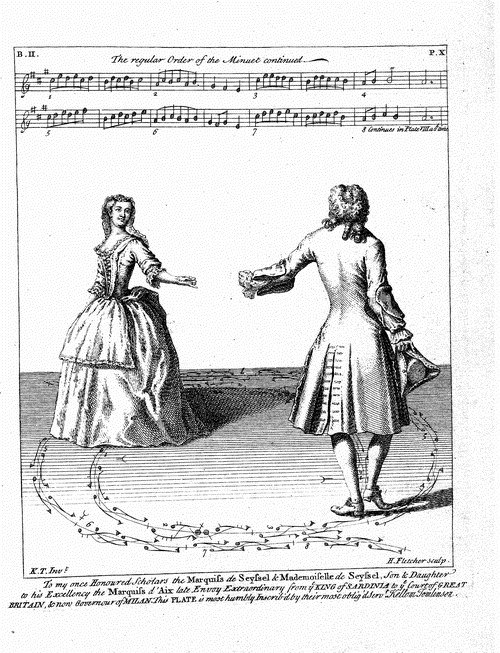 Minuets were a customary opening for an 18th century American ball. They were danced by one couple at a time, beginning usually with the most important personages. This must have led to dilemmas for those later in the sequence, since the minuet is ultimately a dance for showing off. What are the consequences of upstaging the earlier couples who are more important than you?
Minuets were a customary opening for an 18th century American ball. They were danced by one couple at a time, beginning usually with the most important personages. This must have led to dilemmas for those later in the sequence, since the minuet is ultimately a dance for showing off. What are the consequences of upstaging the earlier couples who are more important than you?
The best overall resource at present for learning and practicing minuets (apart from a proper dance instructor) is Minuets for Dancing, by Charles Cyril and Frances C. Hendrickson — this version, with the CD. The booklet contains general instructions for the minuet step, geography, and deportment, as well as the music and figures for 12 minuets. The CD contains performances of 11 minuets along with music for practicing the steps.
Practicing the steps is of essential importance – to learn the minuet, the first thing is to practice the steps over and over and over, until they are second nature, in parking lots and at odd moments throughout the day. Only then can you focus your full attention on the rest of the minuet. Music is helpful, but you can practice the steps at any time by counting to yourself. (“ONE two three FOUR five six, ONE two three FOUR five six, ONE two three . . . “)
Like the Tango, a minuet is an intensely romantic dance that relies on relatively simple movements, but executed sublimely with an effortless perfection of overall style.
Additional resources on the minuet:
A simple introductory description can be found on the Colonial Music Institute website.
The Baroque Dance page of the Library of Congress collection of Dance Instruction Manuals online contains a short description (see toward the bottom of the page) and links to three period dancing manuals that describe the minuet and video clips of two minuet steps. The above illustration and a number of others can be found in the latter pages of the Tomlinson book.